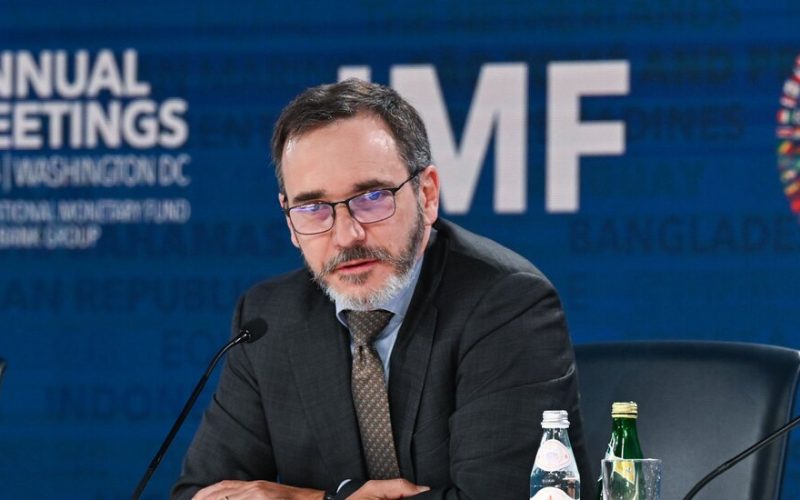The U.S. economy is on track to grow faster this year than previously expected, the International Monetary Fund said on Friday, citing strength in the labor market and an acceleration in investment.
The I.M.F. projects 2.7 percent U.S. economic growth in 2025 in its latest World Economic Outlook report, up from an estimate of 2.2 percent. That stands in stark contrast to reduced growth projections for the euro area, which the fund attributed in large part to weakness in the manufacturing sector and heightened political uncertainty.
“The big story is the divergence between the U.S. and the rest of the world,” Pierre-Olivier Gourinchas, the I.M.F.’s chief economist, said on a call with reporters this week. “We have stronger potential output growth in the U.S. compared to prepandemic, and we have weaker potential growth in other areas, like the euro area or China.”
New economic forecasts released by the fund on Friday build on its analysis in October, which showed that concerns about a postpandemic global contraction appear to have been averted, even though growth remains sluggish in many countries. Economists at the I.M.F. expect global output to grow 3.3 percent this year and next, according to the updated report, slightly above the fund’s previous projections.
But newly elected governments around the world are elevating economic policy uncertainty, posing risks that could alter the trajectory of the global economy in the coming months, the I.M.F. cautioned.
Those wild cards are particularly acute in the United States, where the incoming Trump administration’s proposed tax cuts, deregulation, tariffs and curbs on immigration could ignite inflation. All of these proposals have a common element, Mr. Gourinchas said: They are poised to increase price pressures.
Looser fiscal policy, including tax cuts, could boost U.S. growth in the short term, the I.M.F. said in its report. “In the near term, the risks could increase the divergence between the U.S. and the rest of the world that is already underway,” Mr. Gourinchas added.
But the fund warned that expansionary measures could disrupt markets and the economy in the longer run. And while potential deregulation under President-elect Donald J. Trump could spur investment and short-term growth, the I.M.F. said an “excessive” rollback of regulations could eventually create “boom-bust dynamics” for the United States, with spillover effects elsewhere.
In the euro area and China, risks to economic growth center on the possibility of continued weak performance in the manufacturing sector, low consumer confidence and a surge in protectionist policies, according to the I.M.F. report.
The strength of the global economy continues to be driven by the United States, whose growth is outpacing that in the other advanced economies of the Group of 7 nations.
“Not surprisingly, given the size and role of the U.S. economy, there is keen interest globally in the policy directions of the incoming administration, in particular on tariffs, taxes, deregulation and government efficiency,” Kristalina Georgieva, managing director of the I.M.F., said at a briefing last week.
While inflation in the United States has cooled significantly since last year, progress on taming price increases has stalled in recent months. The Federal Reserve, which began cutting interest rates last year, has signaled only two reductions in 2025, and some forecasters think that policymakers may not lower rates at all in the coming months.
The global economy has proved to be remarkably resilient during several years of turmoil. Globally, inflation is poised to decline to 4.2 percent in 2025, the I.M.F. projected.
“This will help draw to a close the global disruptions of recent years, including the pandemic and Russia’s invasion of Ukraine, which precipitated the largest inflation surge in four decades,” Mr. Gourinchas wrote in an I.M.F. blog post.
Alan Rappeport contributed reporting.








